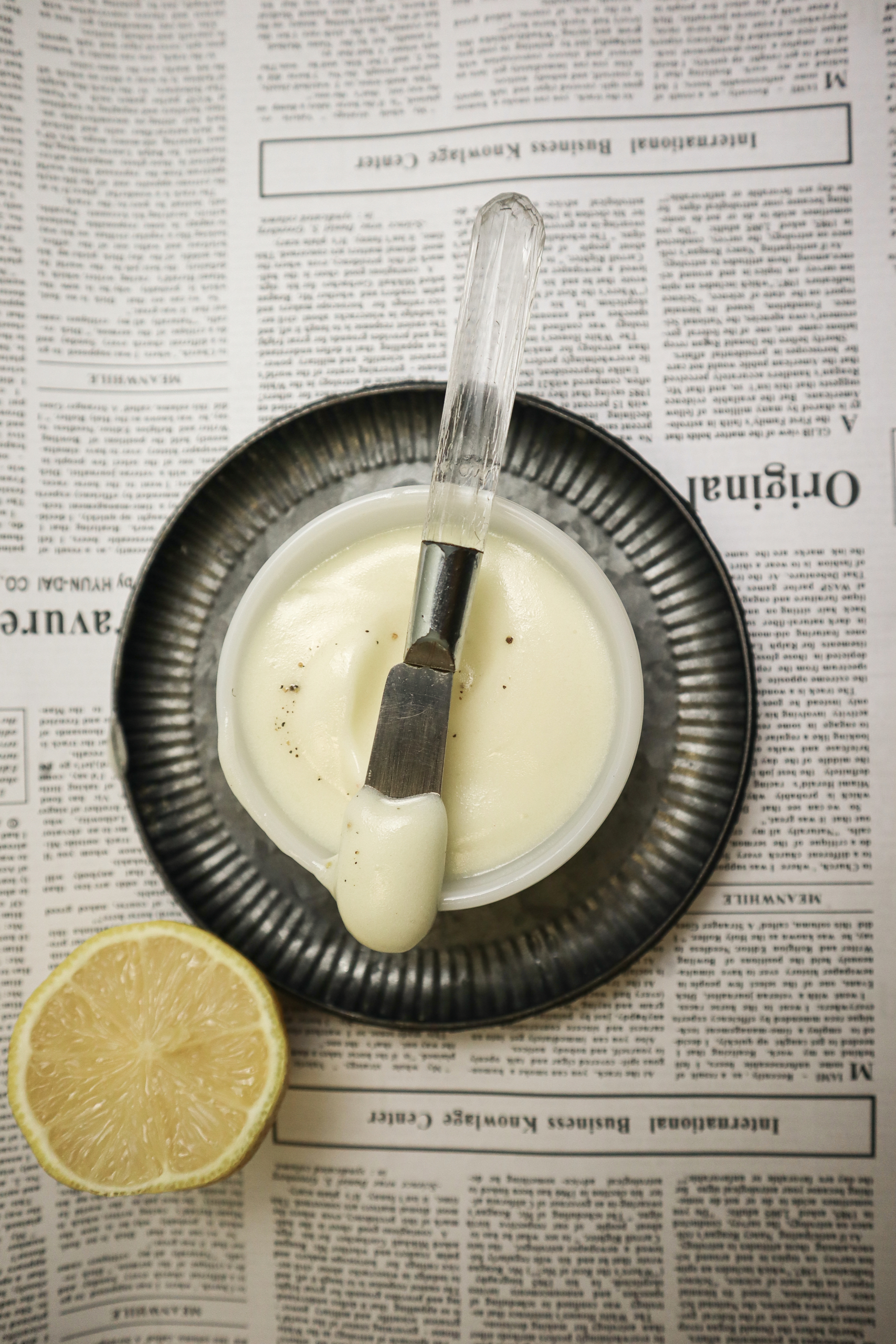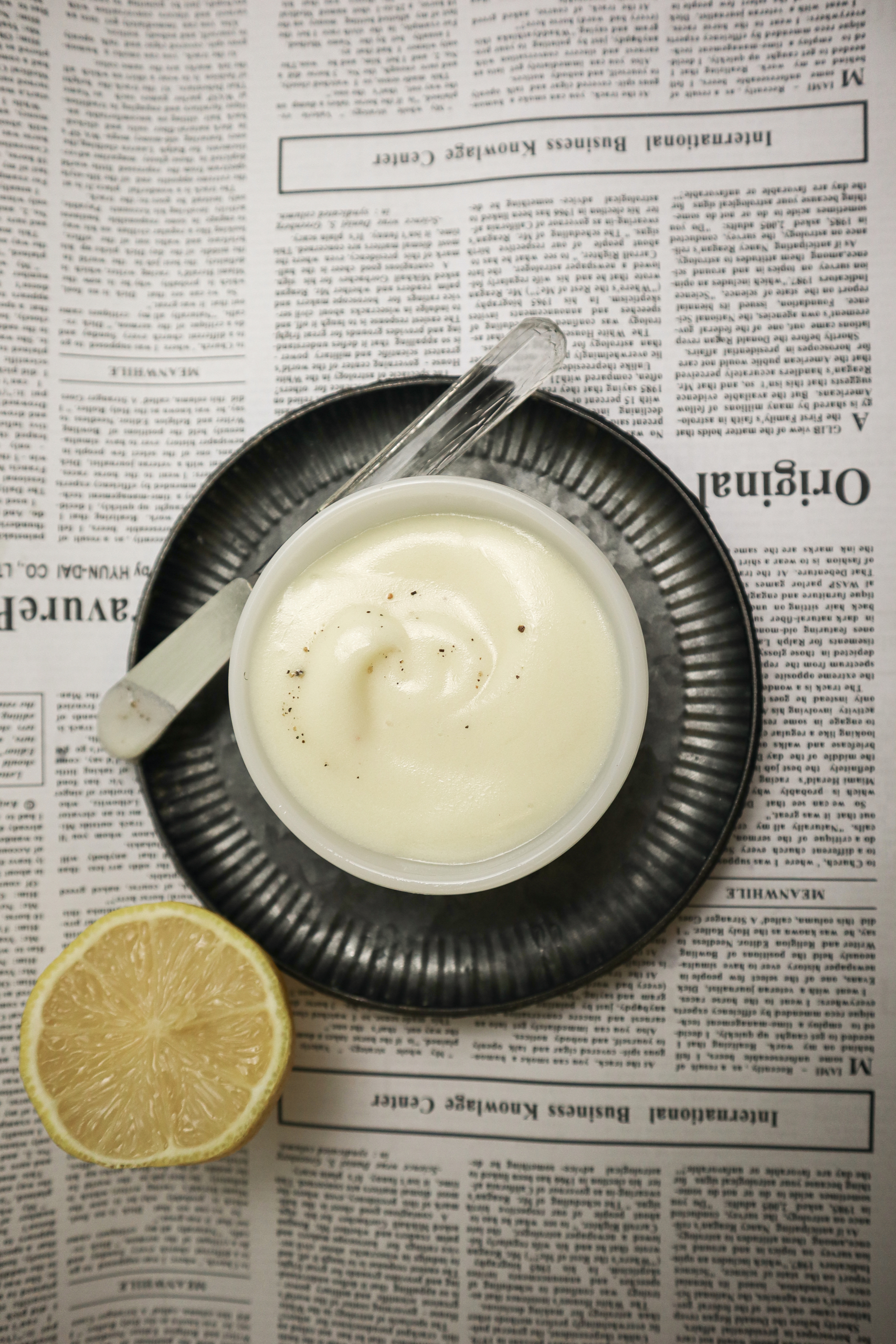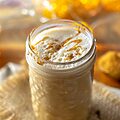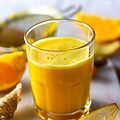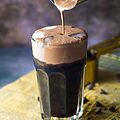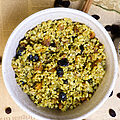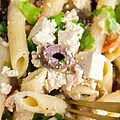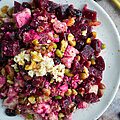Easy Homemade Vegan Mayo with Aquafaba
Today we are making Easy Homemade Vegan Mayo with Aquafaba! Traditional mayonnaise, such as Hellmans, includes ingredients such as rapeseed oil, egg and egg yolks, white vinegar, flavorings, EDTA (a popular food additive) and more.
Store-bought mayo is overall not the best if (a) you’re vegan (b) you want a healthy option, without artificial ingredients. So what’s the other option, you ask? Make it at home! It’s quite easy – you need an immersion blender (hand blender), some oil, acidity from apple cider vinegar and lemon juice, and chickpea water (aquafaba, which is the water that comes off the top of a can of chickpeas), among others.
Not only is this homemade plant-based mayo egg-free and dairy-free, but it’s also incredibly easy to make and packed with flavor. The secret ingredient that gives this mayo its creamy texture is aquafaba, the liquid found in a can of chickpeas. By using aquafaba as a substitute for egg whites, you can create a mayo that is suitable for those on a plant-based lifestyle and those with dairy or egg allergies.
What is Aquafaba?
The first time I heard about aquafaba, it sounded like some type of seafood. It looks almost like egg whites – a transparent, sort of thick liquid that could pass as some kind of gel-water. I had no idea where it came from or what it was – the name didn’t give much away. When I actually found out where it originated from and how it was used, I couldn’t believe my eyes! The fact that the water I used to dump out of a can of chickpeas was actually usable to make cookies was mind-blowing.
Aquafaba has gained popularity in the vegan community for its amazing ability to mimic the properties of egg whites. It can be whipped into stiff peaks, just like egg whites, making it a great option for various culinary applications. In this case, aquafaba acts as an emulsifier, helping to bind the ingredients together and create a thick and creamy consistency for the mayo.
All About the Mayo
To make this easy vegan mayo recipe, you’ll need just a few simple ingredients. In addition to aquafaba, you’ll need some neutral-tasting oil, such as grapeseed or avocado oil, apple cider vinegar, chili garlic paste, lemon juice, agave, salt, and your choice of spices or herbs to add extra flavor. These ingredients are all easily accessible and can be found in most kitchen pantries.
To begin, drain a can of chickpeas and reserve the liquid, which is the aquafaba. This liquid is what you’ll be using to create the base of your mayo. You’ll need to whip up the aquafaba first, then slowly drizzle in the oil while continuing to whisk vigorously. As you whisk, the mixture will begin to emulsify and thicken, forming a creamy and smooth texture.
The great thing about making your own vegan mayo is that you have complete control over the ingredients and flavors. If you prefer a spicier mayo, you can add a pinch of cayenne pepper or some hot sauce. For a tangier taste, you can increase the amount of lemon juice. Feel free to experiment with different herbs and spices to customize the mayo to your liking. Note that the recipe as it’s written in the recipe card is for making a spicy mayo.
A Healthier Option
In addition to being vegan-friendly, this homemade mayo also offers health benefits. By using aquafaba instead of eggs, you eliminate the cholesterol and saturated fat typically found in traditional mayo. The oil used in this recipe can be a heart-healthy choice, especially if you opt for oils high in monounsaturated fats.
In conclusion, this easy homemade vegan mayo with aquafaba is a game-changer for those following a plant-based or egg-free diet. Its simple preparation, incredible taste, and versatility make it a must-try recipe for anyone looking to add a delicious and creamy condiment to their meals. Give it a go and discover the wonders of aquafaba, as you delight in this creamy vegan mayo that is sure to become a staple in your kitchen.
Why You’ll Love This Easy Homemade Vegan Mayo with Aquafaba
Egg-Free, Dairy-Free: This spicy mayo is made using chickpea water, otherwise known as aquafaba. It is the water that is taken from the top of a can of chickpeas, which whips just like egg whites! This is used in vegan recipes for making meringue cookies, or lemon meringue pie.
Mayo is such a versatile spread – you can use it as a spread for sandwiches, a dip for french fries or veggies, a creamy ingredient for salad dressings, or a sauce for wraps and burgers. Its rich and velvety texture enhances any dish you add it to, adding a burst of flavor and creaminess. Who’s up for a mayo & potato salad at your next summer picnic?
Substitutions: Aquafaba
Aquafaba: This is the key ingredient – chickpea water, aka the best thing I’ve discovered since going vegan. This is actually the water from the top of a can of chickpeas. You can also boil chickpeas and make your own aquafaba like this recipe here.
There are no substitutions for aquafaba, because chickpea water has the most starch as compared to liquid from other beans or lentils. This whips just like egg whites would, which really surprised me because I usually pour the canned water down the drain!
However, if you are not using an aquafaba base at all for the mayo, you can also mix some chili garlic sauce with vegan mayonnaise bought from the grocery store. This is a super quick way to make vegan spicy mayo (albeit defeating the purpose of a homemade mayo recipe, but hey it is quicker).
Substitutions: Other
Agave Syrup: Use another liquid sweetener, such as 100% pure maple syrup. This will lend a stronger maple taste though, whereas agave doesn’t contain that robust maple flavor. Brown rice syrup or coconut nectar may work as well.
Chili Garlic Sauce: This is also known as sambal oelek, but you can also use a red hot sauce as well. It’s popular in Southeast Asia, and is traditionally said to have origins in Indonesia. It’s a paste combining ground chilies and hot peppers, with other ingredients such as salt, vinegar, and sometimes lemon, sugar, onions and more. You can also use hot sauce such as sriracha sauce or tabasco, or a pinch of gochujang as a substitute.
Grapeseed Oil: Olive oil, sunflower oil or avocado oil can work instead of grapeseed oil. Canola oil and vegetable oil would work as well, but they are more processed. Cold pressed, organic oils would be the healthiest options here. Any neutral oil with the consistency of avocado oil would be fine though (eg. not coconut oil, as it hardens depending on the temperature).
Easy Homemade Vegan Mayo with Aquafaba Notes
- To make this a regular mayonnaise and not spicy mayo, omit the paprika and chili garlic sauce.
- Make sure to have a clean, dry bowl to avoid cross-contamination when whipping the chickpea water, as it won’t whip if it’s contaminated with anything else remaining in the bowl.
- Do a taste test once it’s all done. Then add black pepper or any other spices and seasonings to add flavor as desired.
- Want to make garlic mayo instead? Stir in some roasted garlic to the finished mayonnaise. Over time, the flavors of the garlic will infuse throughout!
More Recipes You’ll Love
Sundried Tomato Black Bean Burgers
If you make this Easy Homemade Vegan Mayo with Aquafaba, then leave a comment and star rating! Don’t forget to tag your photos @peanut_palate on Instagram. Enjoy!
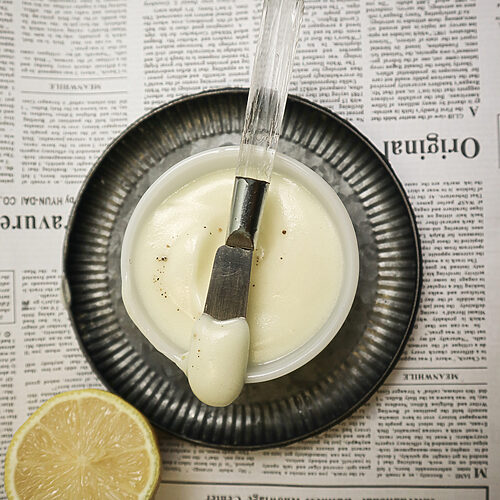
Easy Homemade Vegan Mayo with Aquafaba
Equipment
- Hand Mixer or Food Processor
Ingredients
- 3 tbsp aquafaba whipped
- 1 tbsp lemon juice
- 1 tsp apple cider vinegar
- ½ tsp chili garlic sauce
- ¼ tsp paprika
- ½ tsp lemon juice
- 1 tsp agave nectar
- ½ tsp pink salt
- ¾ cup grapeseed oil
Instructions
- Using an electric hand mixer or a stand mixer, turn it to high and whip the chickpea liquid in a large, dry bowl for about 10 minutes until it forms stiff white peaks (looks like whipped egg whites/meringue).
- Slowly drizzle in the oil while the mixer is going, as well as the rest of the ingredients one by one.
- It should form into a nice and thick mayonnaise consistency. This should take about 15 minutes.
- Once ready, transfer the mayo to a mason jar or airtight container and refrigerate it for at least 30 minutes to allow the flavors to meld together. This step is optional, but will help infuse the flavors more.
- Once ready, use the mayonnaise in recipes, as a sandwich spread or wherever you normally use mayo. Enjoy!
Notes
-
Storage
- Store in a covered bowl or airtight container in the refrigerator for up one month.

